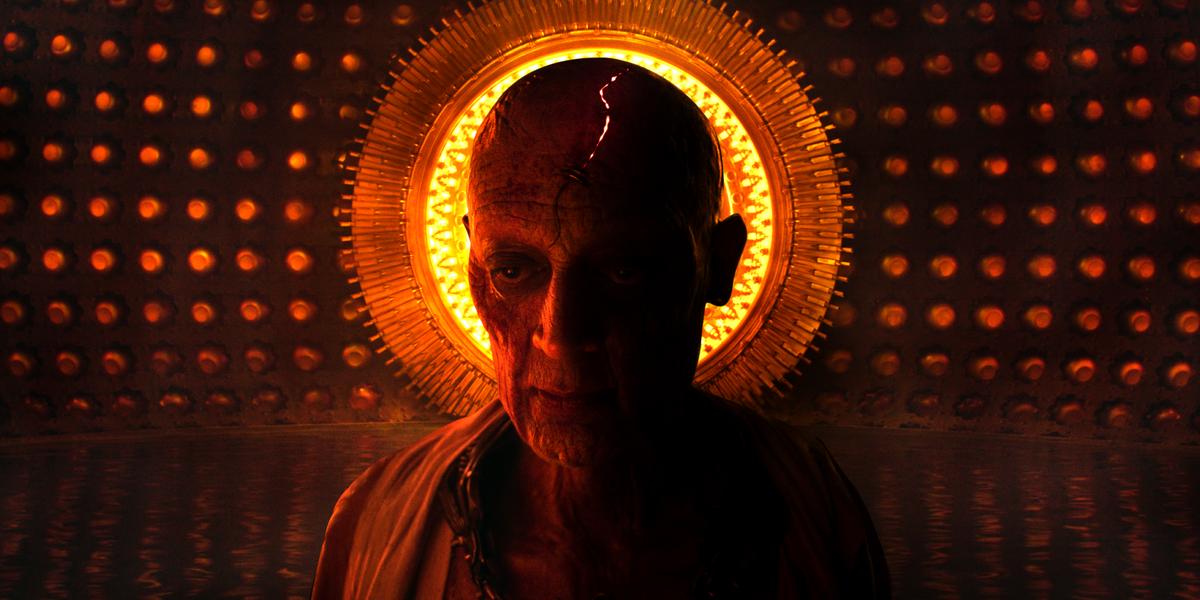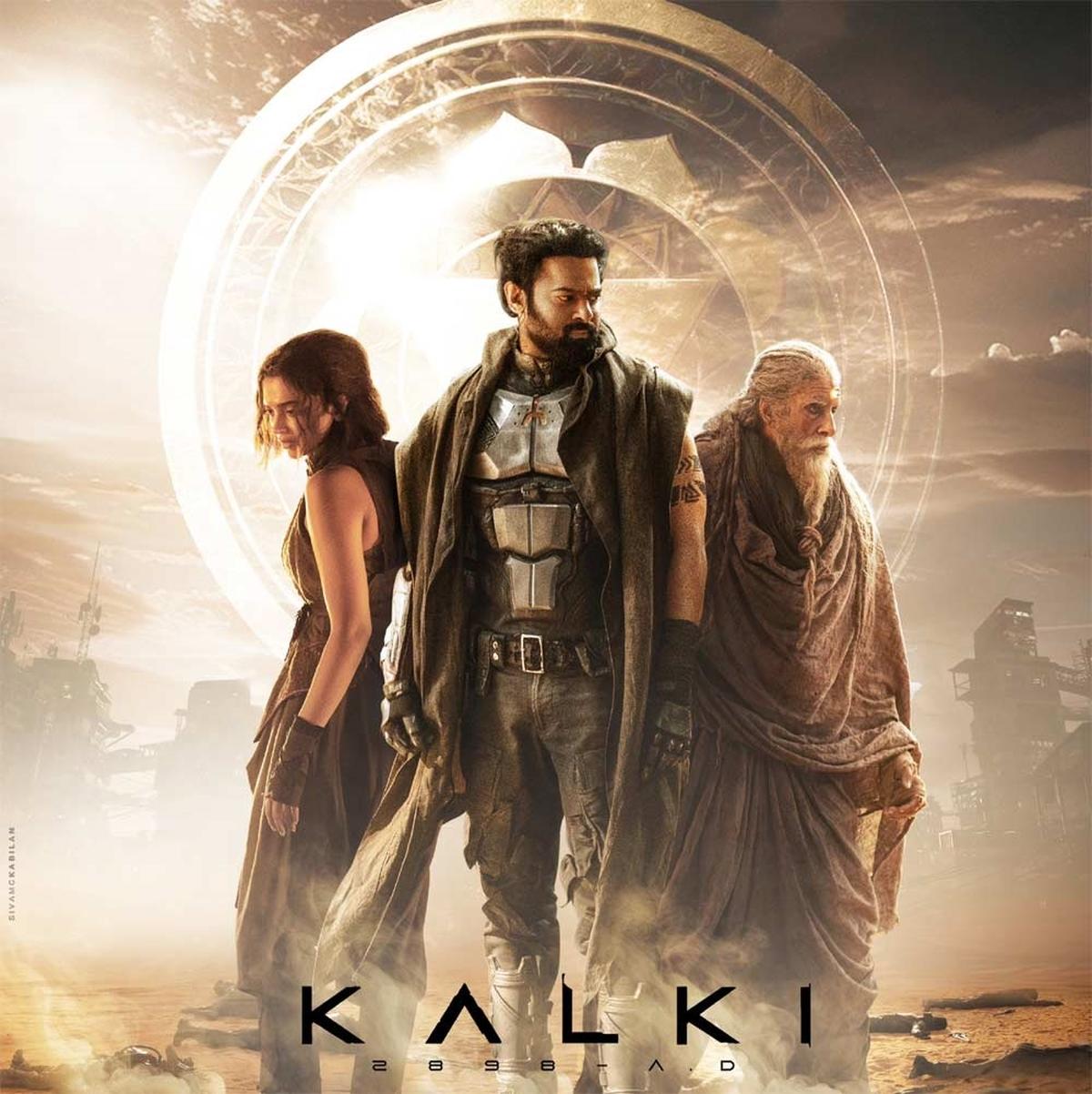On the outskirts of Hyderabad, in Shankarpally, stand the sets of director Nag Ashwin’s Telugu magnum opus Kalki 2898 ADstarring Amitabh Bachchan, Prabhas, Kamal Haasanand Deepika Padukone. Tucked away at one end is an entrance to the mythical land of Shambala. Walking towards a flight of white stairs, Nag Ashwin says it is one of his favourite spots on the set. On several evenings, he would watch the setting sun from these steps. A portion of the sets have been damaged by rain and will be rebuilt for the sequel. For now, it’s a short break for him and his team. A day before heading out for a vacation, he settles down for this exclusive interview.
Gazing at the land on which the sets of Shambala have been built, Ashwin explains, “We spent a lot of time conceptualising and creating colonies for people of different nationalities and religions inside Shambala; it was like city planning.” Shambala is depicted as a haven for people from varied ethnicities and religions, coming together hoping for a new dawn. “It is a microcosm of people looking for hope,” he adds, referring to characters of Rumi (Rajendra Prasad), Mariam (Shobhana), Kyra (Anna Ben), Veeran (Pasupathy) and several others.

Nag reveals that he had even considered opening the film with events in Shambala, but later opted for the Kurukshetra portions that establish the plight of Ashwatthama.
The hidden land of Shambala or Shangrila has been a part of the lore in Tibetan and Indian culture. Impenetrable Himalayan ranges paving the way to the entrance of Shambala is an ode to this belief; for book and movie lovers, it also conjures up images of the hidden kingdom of Wakanda (Black Panther) coming into view or the walls of the railway station paving the way for the platform number 9¾ in the Harry Potter series. “Some of these ideas were part of our subconscious thinking at the planning stage, because of what we have watched or read. By the time we had chalked out our plans and done the storyboards, people were familiar with Wakanda but it was too late to change things. However, Indian literature is also steeped with references to Shambala coming into view at a certain time near Kailasa; some people believe Shambala is within Kailasa.”

Kamal Haasan as the Supreme Yaskin in ‘Kalki 2898 AD’
| Photo Credit:
Special Arrangement
Kalki 2898 AD is an ambitious amalgamation of Mahabharata and dystopian science fiction. Nag Ashwin is glad that the film has whetted the appetite of the audience, especially children and young adults, to know more about Indian epics. An avid fan of Star Wars while growing up and later, a fan of Marvel superhero films, he made Kalki with an intent to appeal to his ten-year-old self, but with a distinct Indian vision.
“The idea of reimagining Kasi as the last surviving city was an interesting starting point,” says Nag. The film’s production designer Nitin Zihani Chaudhary had explained to this writer that the dwelling spaces of Ashwatthama, the people of Kasi and the Complex were designed to show how the demigods were underground while the evil forces or the rakshasas ruled from atop the Complex. Nag adds, “While walking on this surface, imagine if we begin wondering what if there is an ancient person from another yuga beneath the surface. Everything we were trying to depict about the kali yuga is a flip of the normal.”
Part one of Kalki teased the audience with the eerie ways of the Supreme Yaskin (Kamal Haasan) and his Project K. The murals that lead to his chamber depict the evolution of mankind. Positioned at the centre of a womb-like structure, Yaskin is at the threshold of another change. “Our idea was to introduce Yaskin as a mysterious, shadowy figure. A lot more about his backstory and his purpose will be in the second part. For now, we want the audience to know that Yaskin’s experiment has made him a superpower but he also created his nemesis; this sets into motion a set of events. It is a classic story of a villain creating his own nemesis.”

While the film is being discussed for its dramatised and fictionalised storyline of Ashwatthama crossing paths with Bhairava, a reincarnation of Karna (Prabhas), to save an unborn child that spells hope in a disintegrating world and thereby seek redemption, it has also given rise to questions and theories. Nag is aware of the theories on social media that try to decode the film. “It is cool that some people think of Dulquer Salmaan’s character as Parasuram,” he says with a laugh. He wrote about Dulquer as a pilot, raising an abandoned child, which is a parallel to Karna being raised by a charioteer. “We did not envision Dulquer’s character as Parasuram, since Parasuram is depicted in the epics as someone who teaches Kalki.” The other, more obvious parallel includes Deepika Padukone as SUM-80, or Sumathi, walking through fire akin to how Vasudeva walked through the Yamuna with infant Krishna.

Deepika Padukone, Prabhas and Amitabh Bachchan in ‘Kalki 2898 AD’
| Photo Credit:
Special Arrangement
One of the film’s biggest strengths comes from the presence of Amitabh Bachchan as Ashwatthama, an imposing eight-foot-tall ancient hero. For the technical team, the task was to make it all look believable. “Good visual effects are something that should not be seen. The planning begins at the writing stage. Later, we went back and forth 20 to 30 times for some of the VFX shots for Ashwatthama and other portions. Sometimes, I would say the texture of the sand does not look real or something far away in the background needs to look more realistic. When I watched the film, I realised some of these were passing shots and most people would not even know it was VFX. It was a job well done.”
The visual experience has come in for ample praise and Nag acknowledges that they have managed to deliver a film with technical finesse. Ask him how he selects his technical team, cinematographers for example, and he says, “To a large extent, it is gut instinct.” Dani Sanchez-Lopez for Mahanati and Djordje Stojiljkovic for Kalki were both only on their second feature film project when they collaborated with him, Nag mentions. “Djordje is young and I felt that like Dani, he has a unique eye. We wanted to use that freshness and see what we could achieve. We may lose something in terms of experience but gain something else since young technicians do not strictly go by the rules of the game.”
Nag hopes that this technical finesse, and the storyline will make Kalki appeal to an international audience beyond the Indian diaspora. “I think they would be keen to watch our stories, the way we get interested in Greek and Roman stories.” Asked if there are plans for a marketing push along the lines of SS Rajamouli’s RRR on the global stage, he says, “We have to see how much interest is generated organically and then push it further; it has to be a bit of both.”
Addressing a few niggles
Science of the Complex: “We would have liked to explain how the Complex has taken away all life-sustaining elements such as air, food and water. Maybe a simple voiceover would have helped, but I decided against it since I hate voiceovers.”
Where is Roxie (Disha Patani)? “We had some more portions that would define her character better but could not accommodate it. There will be a conclusion for her in the next part.”
The party song: “I am aware that some people feel a few minutes in the first half took away from the depth of the story. In hindsight, maybe we should not have opted for a complete song and dance to introduce Bhairava and the audience to what is inside the Complex. It was a bit of crowdservice. Prabhas fans are loving his dance steps but it felt out of place for us as well. In honest storytelling, the song could have been avoided. I think we were trying to balance a lot of things.”
The cameos: The film has its share of cameos and some of them, despite adding to the entertainment factor, have sparked a debate. “Ram Gopal Varma’s cameo helped establish how an egg costs 5000 units in Kasi. But by then we had stated that food and water is scarce, so it may have felt like a repeat to some viewers.”
Fun fact: Did you know that Amitabh Bachchan’s voice in the Telugu film is AI-generated?
Nag Ashwin with the car ‘Bujji’
| Photo Credit:
Special Arrangement
Prior to the release of Mahanatithe biopic of the late legendary actor Savitri, Nag Ashwin had told this writer that he wanted to narrate stories and make movies that would have a lifespan and make an impact in some way. Debuting with Yevade Subramaniam that traced the journey of a self-centred protagonist to the mythical Dudh Kasi to introspect on life, Kalkionly his third film, has been a humongous task. Nag admits that he sometimes wondered why he cannot make things easier for himself. “Kalki has been a challenging project as the complexity and scale of things grew, demanding more from us. But since I initiated all this, I could not sit back for long and think, ‘Why did I do all this?’.”

A stress buster came in the form of the animated prequel series Bujji & Bhairava. “It was fun writing and executing it. We have two more episodes coming up in a few months.”
As for Kalki part two, the team will regroup in a few weeks to begin planning; it is poised to be bigger. “Yaskin is stepping out of his vimanamso obviously it will be bigger.” Part two will also introduce a fourth world, the ‘Flux Lands’, in addition to Kasi, Complex and Shambala. “We barely mentioned the ‘flux lands’, which will be explored.”







